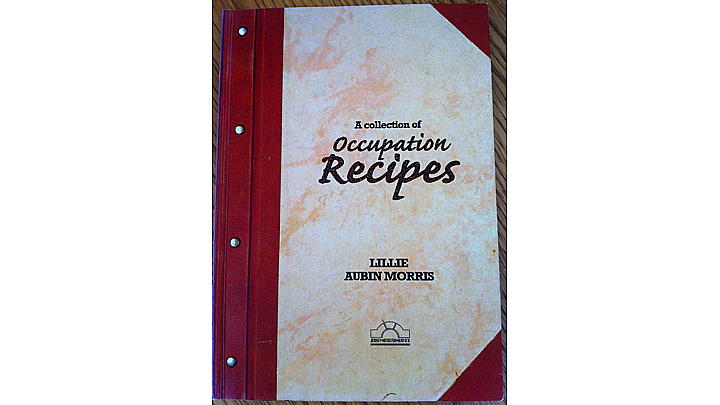"We're all quite well, but getting thinner
Not much for tea, still less for dinner
Though not exactly on our uppers
We've said 'Adieu' to cold ham suppers"
The 75th anniversary of the end of World War 2 seems a fitting time for an extract from the booklet A Collection of Occupation Recipes by Lillie Aubin Morris published by Jersey Museums Service in 1994.
The recipes themselves are indicative of the hardship suffered during the German occupation of the Channel Islands: limpet stew, pastry without butter, salad dressing without oil, plain flour blancmange, potato jelly. But it is the Introduction by Beth Lloyd that sets out some stark facts.
Around 40,000 Jersey residents remained in the island during the five years it was occupied. With more than 11,000 German troops also needing to be fed, rationing was quickly introduced and housewives had to use all their ingenuity to produce edible, nutritious meals. An Essential Commodities Committee was formed to organise the importation from France of essential foods but even so, by 1942, the average weekly ration of butter was just two ounces, while, on weeks when there was a meat ration, each person was allowed just four ounces. Because of the shortage of fuel, people used communal bread-ovens to cook their stews and bean-crocks, and soup pitches sprang up all over the island. Necessity proved to be the mother of invention: if the fuel supply allowed, sea water was evaporated to produce salt; carrots, parsley and nettles were used as a substitute for tea and sugar-beet was grown and roasted to make coffee or processed as a sweetening syrup.
If one couldn't afford the black market for 'treats' such as extra butter or meat, bartering was the only alternative. People who lived in St. Helier were far worse off than their rural counterparts. If you lived in the country you could grow a few vegetables, maybe keep some rabbits or chickens or at least glean in nearby fields. Wheat was milled with everything in, which proved a blessing as it provided the necessary roughage in people's diet. Things became much worse after D-Day when all outside supply was cut off. Women, in particular, suffered from malnutrition as they gave their sparse rations to their children. A massive catastrophe was averted with the arrival of the first International Red Cross ship Vega on 30th December 1944.
… The recipes themselves lead one to wonder why women went to so much trouble to make jellies and blancmanges, cakes and scones, finding substitutes for all the ingredients that were impossible to buy. The answer must be that they wanted as normal a life as possible. Maybe the challenge helped to preserve their sanity and, of course, the family had to be fed and needed not only the calories to preserve their energy levels, but as much variety as possible.
… The scarcity of recipes containing meat comes as no surprise; what is odd is the number of lemons suggested in the jam recipes, as according to one woman there was not a lemon, orange or banana to be had during the whole of the Occupation. Maybe a supply arrived at one point and was immediately used for preserving. The compilation is primarily a fascinating insight into the everyday life of islanders during that period but there are even some dishes which tempt one enough to try them out...


